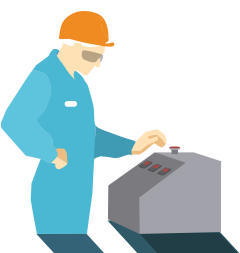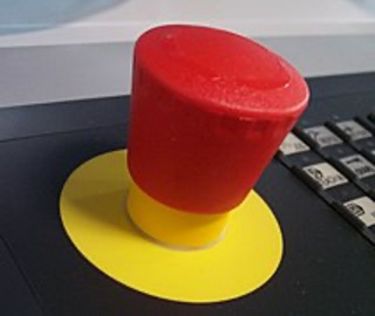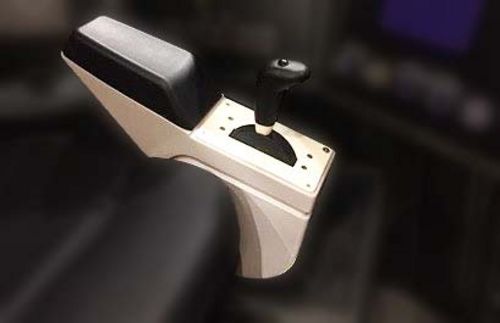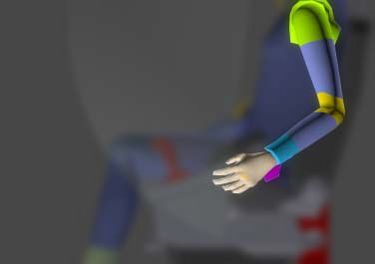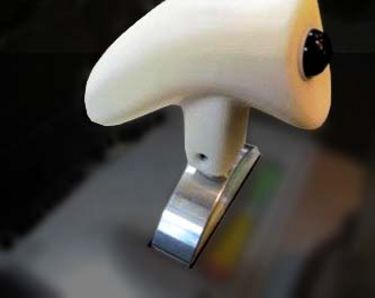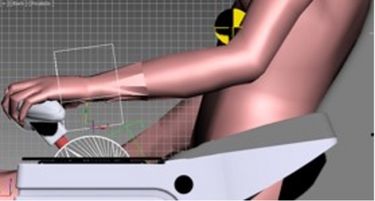Control Actuator Design Principles – Identification of Suitable Control Types
The selection of control actuators appropriate for workers tasks involves an iterative procedure as follows:
- Task evaluation and information collection (see section before previous section)
- Intermediate selection of control families (see previous section)
- Identification of suitable control types (this section)
Identification of suitable control types matches general as well as specific task requirement and characteristics of restriction of movement, hand grip and foot contact with the suitable control types to allow choosing the control actuator in ergonomic design for the task.
Designers and manufacturers are required to describe the human task to be performed by use of the prospective control actuator. A detailed description of the task should contain:
- The person involved (e.g., the worker operating the machine),
- the machine or device addressed (e.g., the kneading machine) and
- an interaction activity of the worker (e.g., powering the motor of the machine on and off).
- Workers tasks, each in one short sentence (e.g., worker powers on and off the machine with a control actuator).
Task evaluation and information collection for “Worker emergency stops machine”:
- General task requirement: In emergency situations, activation by the worker shall be possible if position of control actuator is moderately accurate, preferably with dichotomic on/off selection, already moderate speed of setting shall trigger the stop, however, this should be possible from all working positions with low force demands and shall be possible even with gloves.
- Specific task requirements: While visual feedback about actuator state shall be provided, acoustic or tactile support is recommended, however, never to substitute visual feedback. In case of uncertainty, repeated activation of the actuator should not reverse activation. For smooth operations, avoiding inadvertent operations would be desired. Since use of an emergency stop in emergency situations would be of highest priority, the control actuator shall always be located within easy reach and for direct access for the worker. The surface should provide friction to avoid hand slipping from the actuator. Easy cleaning is required since the actuator shall always be within sight and clearly to be identified.
- Movement characteristics: Linear as the easiest type of movement shall be provided. The axis of movement shall be compatible to normal operation levels, i.e., the z-axis when working on tables, the y-axis when working on walls and the x-axis to be avoided because it tends to be out of sight.
- Grip characteristics: Contact as the easiest and fastest type of grip shall be provided. It shall be possible to use the whole hand for activation and method of force shall continue hand movement towards actuator, i.e., normal forward.
Intermediate selection of control families for “Worker emergency stops machine”:
Selection among requirements and levels required results in control families according to EN 894-3. The given example calls for linear control actuators with discrete movements, preferable with gripping by contact using the whole hand to activate even with normal force.
Identification of suitable control types for “Worker emergency stops machine”:
The identification of a suitable control type results in a typical emergency stop (see Figure 1).
Example for selecting a control actuator for a rail vehicle
The selection process for the master controller of a rail vehicle is a difficult process, as in this case both accurate and rapid operation is required. It is a one-handed operation performed in a seated position (driving position) with the rear hand.
In addition, there must also be a switching position for emergency braking, for which the switching resistance is higher than for the other function positions. Furthermore, the master controller contains additional functions, a touch sensitive zone, which contains a dead man’s handle.
The switch element selected for the time being, a joystick switching lever, was only able to fulfil these functions to a medium degree. The subjective evaluation of the user comfort during operation also only provided average results.
The joystick can most readily be assigned to actuator family 15 according to EN 894-3. It is thus evident from the standard that both accuracy and speed and force transmission requirements are only met to a medium degree. In addition, the feed handle is vertical, which does not allow an optimal hand-arm position on the armrest, resulting in discomfort sensation.
Based on these considerations, a handle element usable for the workers hand was designed in an iterative design process. This novel special master controller cannot be directly assigned to an actuator family according to EN 894-3 but suggests that accuracy as well as speed and force transmission have been optimized. The hand-arm position is horizontal, which significantly improves forearm support on the driver's seat armrest. Subjective user surveys for this master controller were very positive.
References
- EN 894-3:2000+A1:2008 - Safety of machinery - Ergonomics requirements for the design of displays and control actuators - Control actuators. Brussels: CEN.

